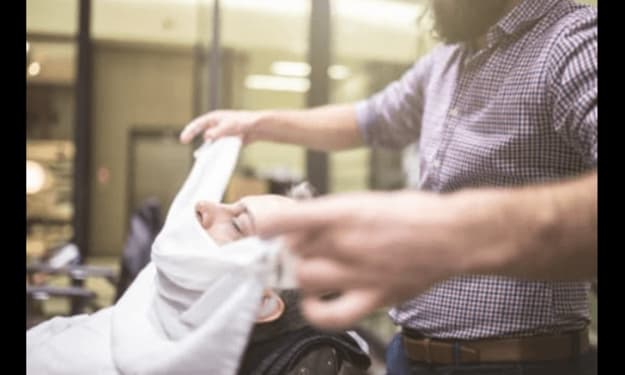Male Fertility Issues: Comprehensive Insights into Oligospermia vs. Asthenospermia
How to distinguish between Asthenospermia and Oligospermia
Oligospermia and asthenospermia are two prevalent issues impacting male fertility. While both conditions can significantly hinder a man's ability to conceive, their causes, symptoms, and impacts vary considerably.
Conceptual Differentiation
Oligospermia, commonly referred to as low sperm count, is a condition where the number of sperm in each ejaculation is below the normal range. Typically, a healthy sperm count ranges between 20 million to 200 million sperm per milliliter of semen. When the count falls below this threshold, it is classified as oligospermia. The causes of oligospermia can include hormonal imbalances, varicocele, cryptorchidism, and infections of the reproductive tract. Lifestyle factors such as smoking, excessive alcohol consumption, exposure to harmful substances, and aging also contribute to oligospermia.
Asthenospermia, or poor sperm motility, is characterized by a low proportion of sperm that exhibit normal motility in the ejaculate. Sperm motility is crucial for the sperm to swim effectively to the female egg for successful fertilization. Causes of asthenospermia include reproductive tract infections, varicocele, unhealthy lifestyle habits (such as smoking and excessive alcohol consumption), and exposure to certain medications or chemicals.
Diagnostic Criteria Differentiation
Diagnosing asthenospermia focuses on assessing sperm motility. Initially, the sperm's movement is restricted by the semen's viscosity. However, after liquefaction, the sperm should exhibit good motility, especially forward progression. Impaired motility can hinder the sperm from reaching the egg in time, resulting in fertilization challenges.
Diagnosing oligospermia involves measuring the sperm count per milliliter of semen. A count below 20 million per milliliter is indicative of oligospermia. This condition is further classified based on severity:
- Mild Oligospermia: 10 to 20 million sperm per milliliter
- Moderate Oligospermia: 5 to 10 million sperm per milliliter
- Severe Oligospermia: Less than 5 million sperm per milliliter
Causes of Oligospermia and Asthenospermia
The causes of asthenospermia include incomplete or damaged maturation of the testicular germinal epithelium, resulting in poor sperm quality and reduced motility. Factors such as low semen volume, abnormal seminal plasma (e.g., due to inflammation of the epididymis, seminal vesicles, or prostate), and unfavorable conditions for sperm activity and survival (such as improper pH, oxygenation, and nutrition) can also contribute to asthenospermia.
The causes of oligospermia encompass various factors that affect sperm production or lead to abnormal morphology and motility. Apart from congenital conditions like azoospermia, acquired factors such as elevated scrotal temperature, nutritional deficiencies, smoking, alcohol damage, medication side effects, diseases, and testicular injuries are significant contributors. Patients should adhere to medical treatment recommendations and focus on self-care to facilitate recovery.
Severity and Impact on Fertility
Both oligospermia and asthenospermia can significantly impair a man's fertility, albeit in different ways. Oligospermia leads to reduced fertility due to an insufficient number of sperm to fertilize the egg. Asthenospermia, on the other hand, results in sperm's inability to reach and penetrate the egg effectively, even if the sperm count is adequate.
Understanding the distinctions between these conditions is vital. Each condition's severity can vary based on individual differences, underlying causes, and the treatment approach. Men must recognize these differences and seek timely medical assistance to preserve their fertility.
Diagnosis and Treatment
Doctors diagnose these conditions through semen analysis, assessing sperm count, motility, and morphology. Treatment options for oligospermia and asthenospermia may include:
- Medications: To address infections or hormonal imbalances.
- Lifestyle Modifications: Such as quitting smoking, reducing alcohol intake, and improving diet.
- Surgical Interventions: Like varicocele repair.
- Assisted Reproductive Technologies: Including intrauterine insemination (IUI) and in vitro fertilization (IVF).
Traditional Chinese Medicine (TCM) offers alternative treatments, using herbal formulations like Diuretic and Anti-inflammatory Pill, which can be beneficial for some patients.
Prevention Measures
Maintaining personal hygiene, adopting a healthy diet, and leading a balanced lifestyle are crucial preventive measures against these fertility issues. Men should avoid excessive intake of spicy, greasy foods and limit alcohol and smoking. Adequate sleep, regular exercise, and avoiding prolonged sitting, especially cycling or driving, also contribute to better reproductive health.
Men working in environments with radiation, high temperatures, or chemicals should take protective measures and avoid such exposures before planning a pregnancy. Additionally, it is advisable to let clothes from dry cleaners sit for a few days before wearing them to reduce exposure to chemicals.
About the Creator
Amanda Chou
Looking to restore your life troubled by prostatitis, epididymitis, seminal vesiculitis and other male reproductive system diseases? Here are the resource to help you in this endeavor.
Enjoyed the story? Support the Creator.
Subscribe for free to receive all their stories in your feed. You could also pledge your support or give them a one-off tip, letting them know you appreciate their work.







Comments
There are no comments for this story
Be the first to respond and start the conversation.